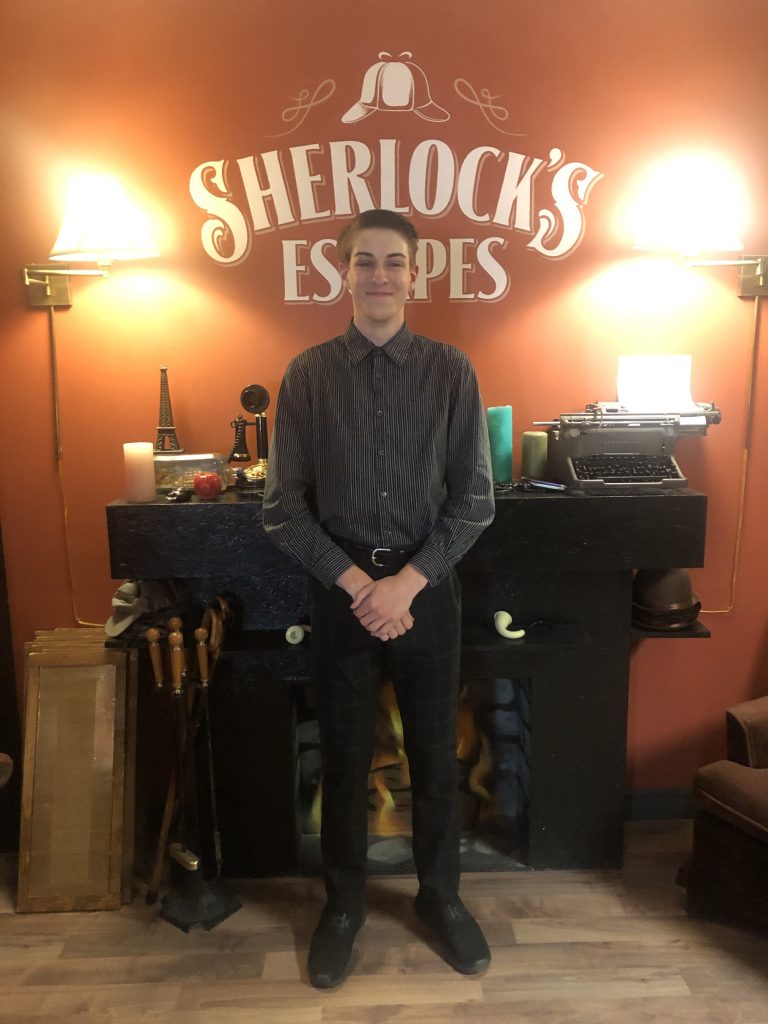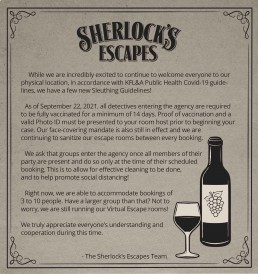Escape rooms are supposed to create an immersive experience where guests have to complete a mission in a set amount of time. Here at Sherlock’s Escapes, we try to start the immersion process right from when guests pass through our doors. Our lobby is set up to look like the lobby of a detective agency, we greet everyone as a “detective”, and we look the part too.

Griffin Mattes is one of our room hosts and lead detectives
But apart from the looks, there’s a lot going on behind the scenes. Our operation may be small, but there has been a lot of thought put into how our escape rooms are laid out and staged, what puzzles go in each of them, how those puzzles connect to each other and to the overarching story of the room as well as the story of the Sherlock’s Escapes Detective Agency. Aside from the rooms themselves, we put a lot of thought into each story line (as you may have read in our Story Driven Escape Room post) and each room host has the creative liberty to create their own detective persona. Giving a lot of creative freedom to our room hosts gives us the opportunity to evolve because each host inspires changes over time and it allows our room hosts to have fun in their job.
As is common in all escape rooms, there are plenty of cameras around. We keep watch for safety reasons but also to make sure that we know where guests are in each room (so that we can chime in with an adequate hint when requested). One of the most amazing parts of the job is to see how guests always surprise us. An unintended benefit of working at an escape room is getting to know the human mind better by seeing how hundreds of people approach the puzzles, the rooms, and how they interact with each other.
Often, this means that maintenance needs to occur to the rooms. Painting, gluing, screwing things back together, replacing puzzles that break often, etc.
All of this is part of what makes WORKING in an escape room, kind of like BEING in an escape room. Constant problem solving all the time.



